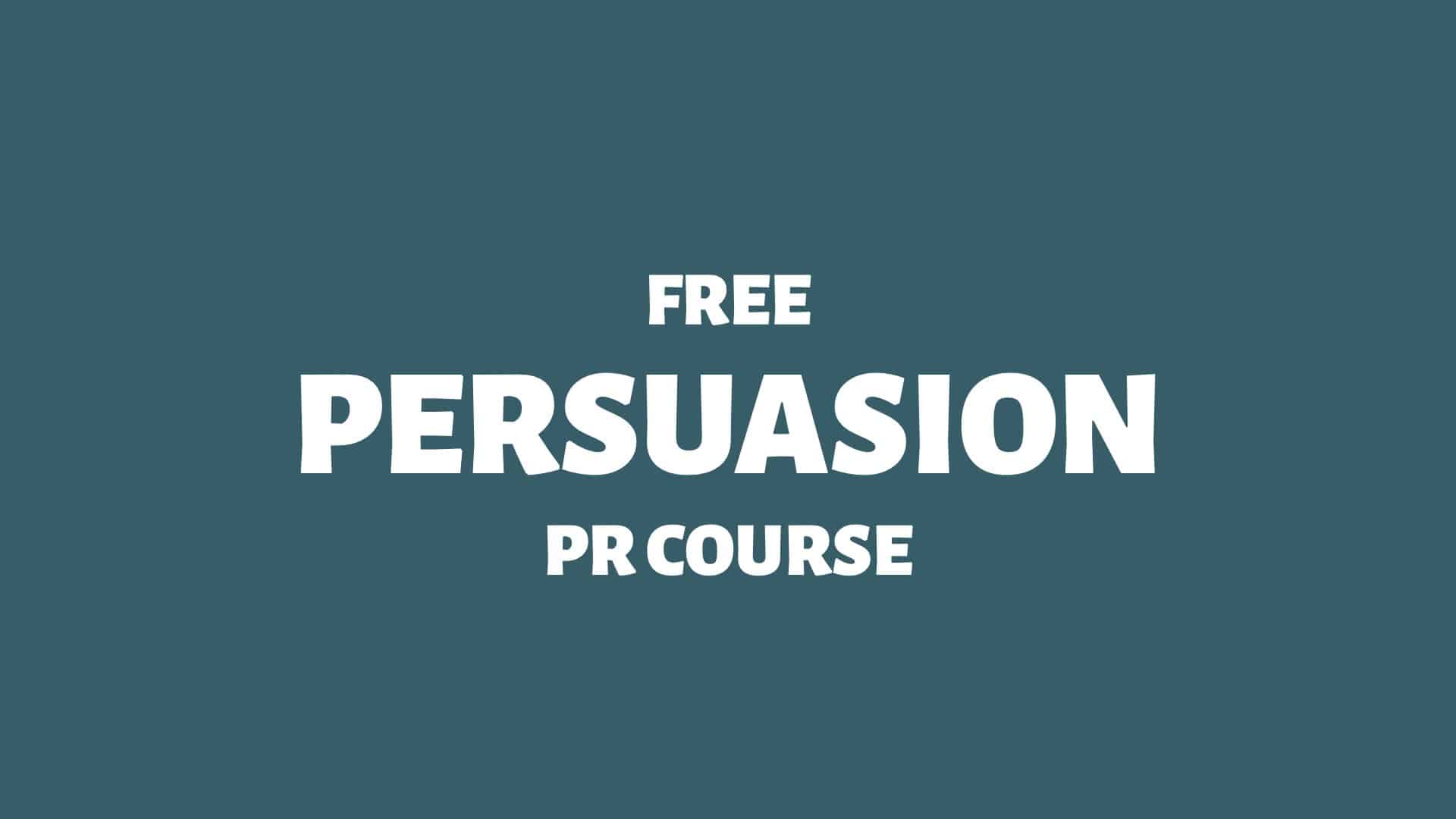Explore the persuasion definition, meaning, and ethics.
Persuasion is a fundamental public relations (PR) concept, serving as the cornerstone of many PR strategies and campaigns.
Persuasion is the art and science of influencing people’s attitudes, beliefs, and behaviours towards a particular idea, cause, or product.
Here we go:
Persuasion Definition
Persuasion is a term with negative connotations. However, we must all be persuasive to get our message across.
Persuasion = the deliberate effort to influence attitudes, beliefs, behaviours, or decisions through reasoning, emotional appeal, or other strategic communication methods.
Please note: Persuasion is not about coaxing anyone into compliance; that’s manipulation or coercion, not persuasion.
Learn more: Persuasion Definition, Meaning, and Ethics
Persuasion Meaning (With PR Examples)
Persuasion in public relations (PR) is not about manipulation or deception; instead, it’s about presenting compelling arguments and information that resonate with the target audience, encouraging them to see things from a particular perspective. It’s about creating an engaging and convincing narrative that aligns with the audience’s values and interests while advancing an organisation’s goals.
PR professionals employ persuasion as a critical tool to influence public opinion. We carefully craft messages that appeal to the emotions, values, and needs of our stakeholders, influencers, and publics. We use storytelling, compelling visuals, and other persuasion techniques to make these messages more impactful. We also leverage the power of social proof, showcasing endorsements from respected figures or testimonials from satisfied customers to enhance the credibility of our message.
Moreover, PR professionals use strategic timing and placement to ensure that our messages reach the audience when they are most receptive. By skillfully applying these and other persuasive techniques, we can sway public opinion in favour of an organisation, enhancing its reputation and influence.
The power of persuasion lies in its ability to connect, engage, and influence. The tool transforms messages into compelling narratives, brands into trusted names, and audiences into loyal communities.
PR Campaign: “Real Beauty” by Dove
One of the most successful PR campaigns that effectively used persuasion is Dove’s “Real Beauty” campaign. Launched in 2004, the campaign sought to challenge the traditional beauty standards portrayed in the media and promote a more inclusive definition of beauty.
By featuring women of different sizes, ages, and ethnicities in their advertisements, Dove appealed to the emotions (pathos) of their publics and sparked a global conversation about body positivity and self-esteem.
The campaign also demonstrated Dove’s commitment to its brand values (ethos) and presented a compelling argument (logos) for redefining beauty.
The success of the “Real Beauty” campaign can be attributed to several factors:
PR Campaign: “Share a Coke” by Coca-Cola
Another notable example is the “Share a Coke” campaign by Coca-Cola.
Launched in 2011 in Australia and later rolled out globally, the campaign involved replacing the Coca-Cola logo on bottles and cans with famous names, inviting consumers to “Share a Coke” with someone they know. This campaign effectively used pathos by creating a personal connection with consumers and logos by encouraging sharing, which aligns with the brand’s values of bringing people together.
The “Share a Coke” campaign was successful due to its innovative and personalised approach:
Learn more: Persuasion Definition, Meaning, and Ethics
Persuasion Ethics
Persuasion is about getting someone to comply because they want to. A manipulator always has his best self-interest in mind, whereas a persuader must see the world through the eyes of others.
Persuasion and Professional Integrity
To succeed with persuasion techniques in public relations, abide by these principles:
Please note: Persuasion is not about coaxing anyone into compliance; that’s manipulation or coercion, not persuasion.
Be a persuader. Not a manipulator.
Learn more: Persuasion Definition, Meaning, and Ethics
Ethos, Pathos, and Logos: Three Modes of Persuasion
Ethos, pathos, and logos are three modes of persuasion recognised since ancient Greece, and they play an essential role in public relations.
“Aristotle’s three modes of rhetorical persuasion are ethos, pathos, and logos, which are based on moral competence, emotional appeal, and reason.”
Source: Sino-US English Teaching 1Lin, W. (2019). Three Modes of Rhetorical Persuasion. Sino-US English Teaching. https://doi.org/10.17265/1539 – 8072⁄2019.03.003

In PR, these three modes of persuasion are often combined to create compelling messages that resonate with the audience on multiple levels. 2Modes of persuasion. (2023, September 27). In Wikipedia. https://en.wikipedia.org/wiki/Modes_of_persuasion
By understanding and applying the principles of ethos, pathos, and logos, PR professionals can craft messages that resonate deeply with their audience, driving action and fostering lasting relationships.
Learn more: Ethos, Pathos, and Logos in Public Relations

THANKS FOR READING.
Need PR help? Hire me here.

What should you study next?
Spin Academy | Online PR Courses

Spin’s PR School: Free Persuasion PR Course
Use this free Persuasion PR Course to elevate your public relations game with powerful insights. Drive impact and influence like never before.
Persuasion 101
Advanced Persuasion
Propaganda
Learn more: All Free PR Courses
💡 Subscribe and get a free ebook on how to get better PR.

Annotations
| 1 | Lin, W. (2019). Three Modes of Rhetorical Persuasion. Sino-US English Teaching. https://doi.org/10.17265/1539 – 8072⁄2019.03.003 |
|---|---|
| 2 | Modes of persuasion. (2023, September 27). In Wikipedia. https://en.wikipedia.org/wiki/Modes_of_persuasion |


